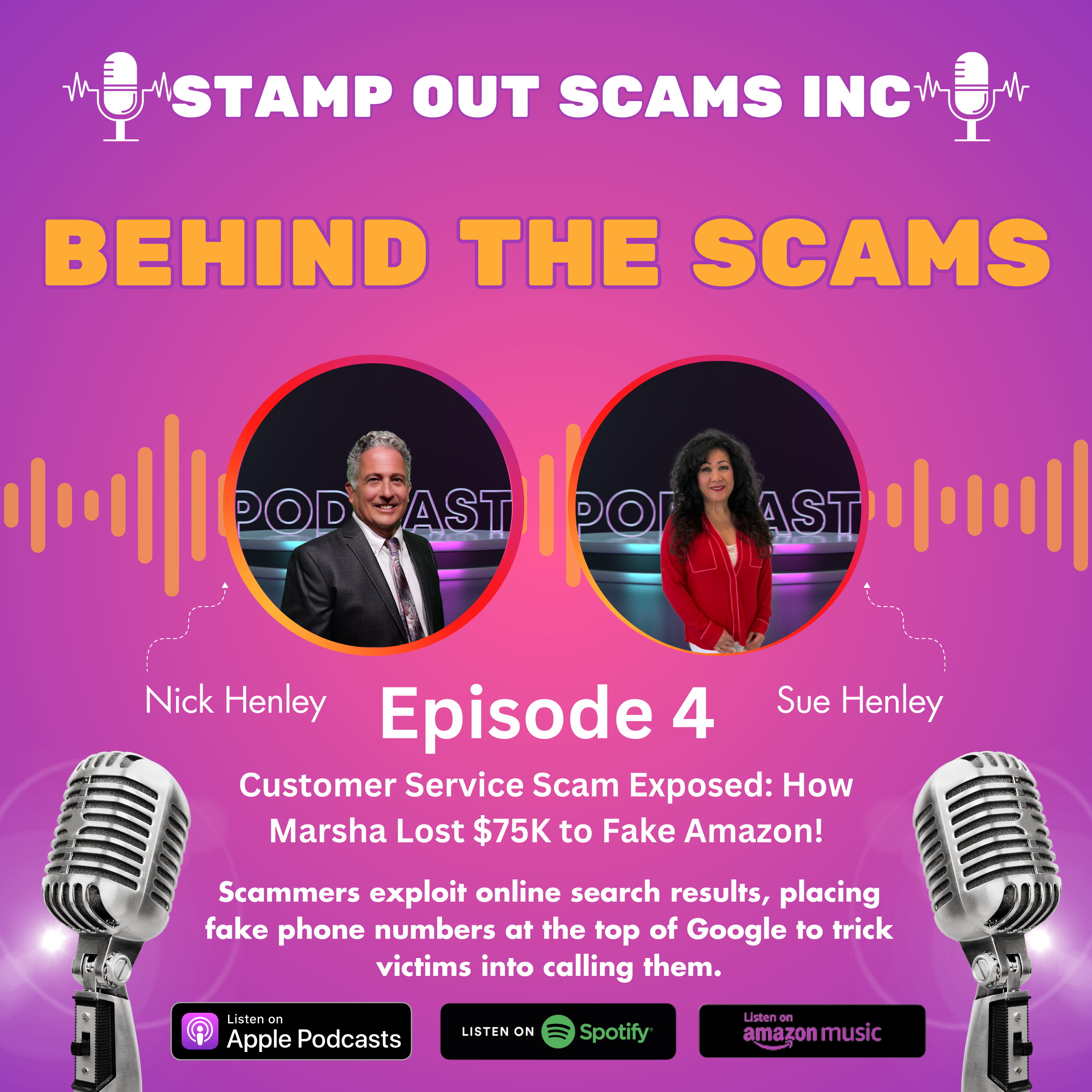Introduction
Envision this, my daughter Sarah and I, nerves sizzling, sitting down to record our first ever behind-the-scenes podcast episode about scams. With two mugs of coffee and enough anxiety to power a small server farm, we squabble, reminisce, and—spoiler alert—realize that neither age nor Internet savvy spares you from nearly getting bamboozled by a phony bank text or bogus charity plea.
What happens when you mix a mom who thinks “Venmo” rhymes with “techno” and a daughter who’s sure she can spot every scam from a mile away? You get a kitchen-table exposé, complete with confessions, cringe, and the kind of hard-won wisdom only real-life disaster can teach. From Zelle “oopsies” to the infamous “grandparent call” gone viral, we’ll spill the tea on how even the sharpest Gen Z’ers can get caught in a web of digital deception—and how those awkward moments turned into our best lessons yet.
(Yes, we went there. And yes, someone’s allowance may be in Venmo limbo forever.)
So, grab your own beverage and join our candid conversation as we unpack the wild world of scams targeting Gen Z and Millennials. I promise, it’ll be painfully relatable, slightly awkward, and loaded with advice you won’t get from your average security lecture.
I Almost Fell for It: Tales of Millennial Mishaps and Gen Z Close Calls
Let’s just get this out of the way: I know way too many people my age who’ve, like, been scammed. And honestly, I almost joined the club myself. You’d think being a Gen Z digital native would make me immune to Millennials and Gen Z scams, but apparently, overconfidence is the new vulnerability.
Sarah vs. The $375 “Bank” Text: A Real-World Bank Fraud Scam
According to my daughter Sarah, “I’m minding my own business when I get a text that looks exactly like it’s from Wells Fargo. “Did you make a $375 purchase?” it asks, with all the urgency of a Netflix password reset. My heart does a triple backflip. I reply “NO” (because, duh, I haven’t spent that much since my last concert splurge). Two minutes later, my phone rings. Caller ID says “Wells Fargo.”
Here’s where my inner Gen Z instincts kick in. I’m at work, too busy to answer. Later, I Google the number—turns out, it’s a scammer hotline, not my bank. Dodged. A. Bullet. But wow, these bank fraud scams statistics are no joke—these fraudsters are getting way too good at impersonating legit companies.
Why Even “Digital Natives” Get Duped
Let’s be real: we grew up online, but that doesn’t mean we’re scam-proof. Scammers study our habits, stalk our socials, and even use slang to sound like us. Our confidence (“I’d never fall for that!”) is exactly what they’re counting on. According to a 2024 Bankrate survey, 1 in 3 U.S. adults encountered a scam just this year, and nearly 2 in 5 actually lost money. Gen Z and Millennials are losing cash at higher rates than any previous generation—so much for being tech-savvy superheroes.
Embarrassing Fail? Why Reporting Is a Power Move
Here’s the awkward part: most people don’t report scams because it feels embarrassing. But hiding it only helps the scammers.
That stigma often prevents people from coming forward, which unfortunately only helps the scammers continue their operations undetected. – Nick Henley
Reporting your close call or loss isn’t a fail—it’s how you help shut these scams down for everyone.
When we keep hush-hush about being fooled, scammers just get bolder and sharper, and the next “victim” could be someone we care about. Reporting scams isn’t just damage control; it’s a way of passing the shield forward, helping banks, tech companies, and even group chats to spot patterns and shut down fraud faster. Think of it as normalizing digital self-defense—like updating your phone, but for your peace of mind.
After all, nobody bats an eye if you warn your friends that your ex is lurking on Instagram again, right? So why not do the same with scams? When we swap “you won’t believe what almost happened to me” stories, we’re building a collective immunity.
And yes, sometimes that means admitting you almost got played by a text message more generic than a chain restaurant menu. It’s not about shame—it’s about making sure the next scammer has to work a lot harder to trick any of us.

Unmasking the Numbers: What Stats Say About Gen Z & Millennial Scam Victims
Okay, let’s put down our iced coffees for a second, because these bank fraud scams statistics are about to make you spit out your oat milk. If you thought scams only happened to your grandma when she clicked on a suspicious “You’ve won a cruise!” email, think again. The real tea? Yes, Gen Z and millennials—are the new scam magnets, and the numbers are wild.
First, let’s talk about the elephant in the digital room: Financial fraud statistics 2023 are off the charts. According to the Federal Trade Commission’s scam reports, “In twenty twenty three, Americans lost more than ten billion dollars, that’s billion with a b, to scams.” Ten. Billion. Dollars. That’s enough to buy every Gen Z’er a year’s supply of avocado toast and still have change for a Taylor Swift ticket (well, maybe).
But wait, it gets juicier. A recent Bankrate survey dropped this bombshell: one in three American adults encountered some form of financial fraud or scam in just the past year. And here’s the kicker—nearly two in five of those actually lost money. So, if you’re reading this on your phone (statistically likely), there’s a good chance you or someone you know has been targeted.
- Over 50% of Gen Z scam encounters result in financial loss (Bankrate 2024). That’s not just unlucky—that’s a full-on epidemic.
- 74% of mobile users (and let’s be real, that’s mostly us Gen Z’ers) dodged or faced daily scam attempts in 2025 (HelpNetSecurity).
- Scam losses in the U.S. hit a record-smashing $10 billion in 2023 (FTC).
So, let’s bust a myth: No, grandma isn’t the biggest scam target anymore. In fact, the digital crooks have gotten so sophisticated, they’re going after the “tech-savvy” crowd—us! The Gen Z scam losses are climbing because scammers are sliding into our DMs, spoofing our banks, and even faking Venmo requests from friends. The landscape has evolved dramatically, and these fraudsters are using tactics that can fool even the most careful among us.
The Federal Trade Commission’s latest report really puts this into perspective. In twenty twenty three, Americans lost more than ten billion dollars, that’s billion with a b, to scams.
So, next time you get a weird text from “your bank,” remember: the numbers don’t lie—and neither do the scammers.

You Call That ‘Digital Native’? How Our Online Habits Are a Hacker’s Playground
Let’s be real: if there was an Olympic sport for mobile users scams, Gen Z and millennials would be accidental gold medalists. They grew up swiping, tapping, and Venmo-ing like it’s second nature. But here’s the plot twist—our so-called “digital native” status might actually make us prime targets for common online scams. I mean, who knew being tech-savvy could backfire?
From Venmo to Instagram ‘Deals’: The Danger of Seamless Digital Life
Everything happens online for us—dating, banking, shopping, even donating to “charity” in the parking lot (more on that in a sec). We’re so used to instant everything that when a payment request pops up on Venmo, or we see a “limited-time” deal on Instagram, it feels totally normal. No red flags, just dopamine and a quick tap. But, like, the reality is our comfort with technology sometimes makes us overconfident.
Many millennials get caught by these because they play on our desire for deals and rewards.
Scammers know exactly where we hang out online. They’re sliding into our DMs, spoofing texts, and sending us “winning” Amazon gift cards that are about as real as my willpower at a midnight Taco Bell run. According to 2025 findings, over 74% of mobile users (especially Gen Z) have gotten scam contacts. That’s not just a stat—it’s a lifestyle hazard.
Sarah’s Story: When Venmo Becomes a Scam Magnet
According to my daughter Sarah, she has a friend named Jenna. Well, Jenna got hit by a classic Venmo scam—a fake charity with a sad story, a QR code, and a clipboard that looked official enough to fool anyone running errands on a Saturday.
And the emotional hooks? They’re sharper than ever—scammers prey on everything from your FOMO to your generosity, weaponizing trust with a single emoji or urgent message. Even the savviest scrollers can find themselves second-guessing a friend request or a payment ping, because today’s scams are perfectly customized for the way we live online.
Well Sarah’s friend Venmoed $50 on the spot. Later, Sarah and Jenna reverse-searched the kid’s photo from the flyer—turns out, it was a stock image. Ouch. The scammers were gone, and so was her money.
Why Tech-Savvy Doesn’t Mean Scam-Proof
Here’s the awkward truth: Our digital confidence can be our downfall. We’re so used to online scams for young adults looking “legit” that we don’t always pause to question. Payment apps and social media are our comfort zones, but they’re also a hacker’s playground. If someone insists on Venmo or cash, or pressures you to act fast, that’s your cue to hit pause—not pay.
- Always research before donating or buying.
- Never trust urgency—scammers love a ticking clock.
- If it looks too good (or too sad) to be true, it probably is.
Bottom line: Being a digital native is cool—just don’t let it make you a scam statistic.

Scams Level Up: From Crypto ‘Riches’ to AI Imposters (Yes, That’s a Thing Now)
But the scammers aren’t just getting more creative—they’re getting organized, adapting their tactics faster than most security updates can keep up. Today’s fraudsters run their schemes like small businesses: slick branding, scripted pitches, even “customer support” lines to string you along or silence your suspicions. If you think you’re too tech-savvy or skeptical to be targeted, think again. Everyone—students, professionals, retirees—has a digital footprint that’s vulnerable to exploitation.
What’s wild is that these cons aren’t just limited to classic donation sob stories or desperate pleas for quick cash. They’re evolving in real time, blending old-school bait-and-switch with high-tech trickery. The line between a clever marketing pitch and a calculated fraud has never been blurrier.
Okay, let’s spill the digital tea: scams these days are basically a Netflix thriller, minus the popcorn and with way more existential dread. From crypto investment scams risks to AI-powered voice cons, the only thing more creative than the scammers are the scam names—seriously, “pig butchering”? Who comes up with this stuff?
Crypto Investment Scams: The Digital Gold Rush (But You’re the Gold)
If you’ve ever seen a “get rich quick” ad for crypto and thought, “Wow, this is my moment!”—congrats, you’re exactly who the scammers want. They create entire fake trading platforms with, like, real time charts and graphs. Victims can log in and see their investments growing, but it’s all fake. The only thing growing is the scammer’s bank account. When you try to cash out, suddenly there’s a “technical issue” or a surprise fee. Spoiler: you’re not getting your money back.
Buy Now Pay Later Scams: Designer Bags, Disappearing Stores
Next up in the types of online scams hall of fame: buy now pay later scams. You see a luxury item at a “can’t-miss” monthly payment, you click, you pay, and—poof!—the store vanishes faster than my willpower at a dessert buffet. These fake shops prey on financial FOMO and the pressure to keep up with Insta-worthy trends.
Fake Job Offers on LinkedIn: Work-from-Home, Lose-from-Home
Let’s talk fake job offers LinkedIn style. Scammers post remote jobs, run fake interviews, and then ask for “training fees” or “background check” payments. People are losing anywhere from $50 to thousands. The red flag? If a job wants you to pay before you even start, run—don’t walk—the other way.
Pig Butchering & Romance Scams: Yes, That’s Really What It’s Called
Now, for the main event: pig butchering. No, it’s not a weird cooking show. It’s a romance/investment scam where fraudsters build a fake relationship, then slowly “fatten you up” with talk of crypto riches before “butchering” your bank account. These scammers are sketchy and really know how to rip people off. The emotional manipulation is next-level, and the losses can be absolutely brutal.
AI Scams: The New Frontier
And just when you thought it couldn’t get weirder, here come AI scams. Scammers now use AI to clone voices, spoof texts, and create hyper-realistic fake platforms. Even the most social media-savvy Gen Zers are getting duped, because our tech confidence sometimes makes us, well, overconfident.
- Crypto investment scams risks: fake platforms, fake profits, real losses
- Buy now pay later scams: affordable offers, vanishing stores
- Fake job offers LinkedIn: pay-to-play jobs that don’t exist
- AI scams: voice cloning, spoofed texts, and more

Locking It Down: Real-World Scam Prevention Tips That Actually Work (Plus, a Few Hard Truths)
Let’s be real: if you’ve ever felt your heart race after getting a “limited time offer” DM or a sob story fundraiser on Venmo, you’re not alone. Scammers are basically Olympic athletes at creating urgency. But here’s the first rule of scam prevention tips: treat urgency like a giant red stop sign. As my mom always says (and now I do, too), “If someone’s pressuring you to make an immediate decision about money, that’s a huge red flag.” Scammers want you to act fast so you don’t have time to think—or Google.
Next up: research before you tap ‘Send.’ Does this charity, boss, or crypto platform actually exist? If you can’t find a legit website, news article, or even a sad Facebook post about it, back away slowly. And if they insist on cash or Venmo only, that’s basically scammer code for “you’ll never see this money again.”
Now, here’s a hard truth: even the savviest Gen Z or millennial can get duped. The difference between being a scam victim and a scam-buster? Speaking up. Silence just breeds more victims. There’s zero shame in reporting what happened—seriously, the only thing worse than falling for a scam is letting someone else fall for the same one. Legitimate organizations will never pressure you to share personal information through unsolicited calls or texts.
So, what do you do if you get hit? First, breathe. Then, report it to the Federal Trade Commission scam reports page at FTC.gov/complaint. You can also call the Stamp Out Scams helpline for support (no judgment, just help). And if you’re feeling lost, try our AI chatbot at Stamp Out Scams—it’s like having a scam-fighting bestie in your pocket, ready to answer any question, day or night.
Remember, 57% of scam targets don’t lose money. Why? Because being informed and slowing down works. Two-factor authentication is a pain, but it’s your digital seatbelt. Always verify contact details independently—don’t trust the number or link sent to you out of the blue.
In the end, scam prevention strategies are about community, not shame. The more we talk, share, and report, the harder it is for scammers to win. So, stay sharp, trust your gut, and if it seems too good (or too urgent) to be true, it probably is. Let’s lock it down together!
Final Thoughts
In today’s interconnected world, scammers are constantly evolving their tactics, hoping to catch even the most vigilant among us off guard. The good news? By staying informed, cautious, and ready to act, we can significantly reduce their chances of success. Awareness is your strongest armor. If something feels urgent, suspicious, or just too good to be true, always treat it with skepticism and take the time to double-check before responding or sending money. Your instincts and critical thinking are powerful tools in your scam-prevention toolkit.
Don’t underestimate the power of community. The more we share our experiences—whether we almost fell for a scam or actually did—the more we break the cycle of shame that scammers rely on. Every story told, every scam reported, and every warning shared makes it that much harder for fraudsters to operate in the shadows. Remember, no one is immune to deception, but together, we can make our digital and real-world spaces safer for everyone.
Above all, keep talking, keep questioning, and keep looking out for your friends, family, and fellow community members. Together, we can lock it down, one smart decision at a time.


